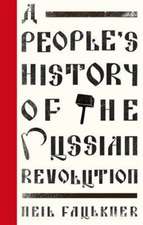The Armenia-Azerbaijan Conflict: Causes and Implications
Autor Michael P. Croissanten Limba Engleză Hardback – 22 iul 1998 – vârsta până la 17 ani
Preț: 461.35 lei
Preț vechi: 637.75 lei
-28% Nou
Puncte Express: 692
Preț estimativ în valută:
88.29€ • 92.06$ • 73.38£
88.29€ • 92.06$ • 73.38£
Carte tipărită la comandă
Livrare economică 20 martie-03 aprilie
Preluare comenzi: 021 569.72.76
Specificații
ISBN-13: 9780275962418
ISBN-10: 0275962415
Pagini: 192
Dimensiuni: 156 x 235 x 20 mm
Greutate: 0.49 kg
Ediția:New.
Editura: Bloomsbury Publishing
Colecția Praeger
Locul publicării:New York, United States
ISBN-10: 0275962415
Pagini: 192
Dimensiuni: 156 x 235 x 20 mm
Greutate: 0.49 kg
Ediția:New.
Editura: Bloomsbury Publishing
Colecția Praeger
Locul publicării:New York, United States
Notă biografică
MICHAEL P. CROISSANT is an Earhart Fellow in the Department of Central Eurasian Studies at Indiana University. He has published numerous articles on the southern former Soviet republics in Strategic Review, Eurasian Studies, National Security Studies Quarterly, Comparative Strategy, and other journals.
Cuprins
IntroductionHistorical Origins of the Armenia-Azerbaijan ConflictThe Armenia-Azerbaijan Conflict, 1988-1991Changing Regional Dynamics in the Post-Soviet PeriodThe Armenia-Azerbaijan Conflict, 1992-1994The Armenia-Azerbaijan Conflict Since 1994Future Prospects and ConclusionsAppendixesSelected BibliographyIndex








